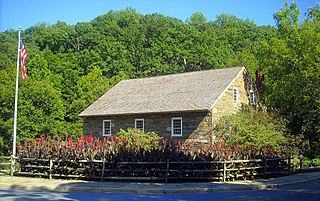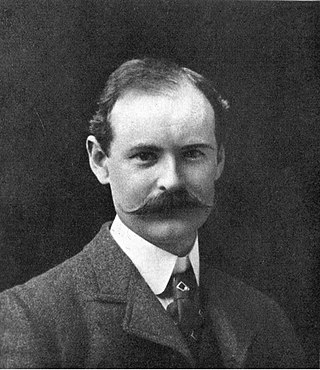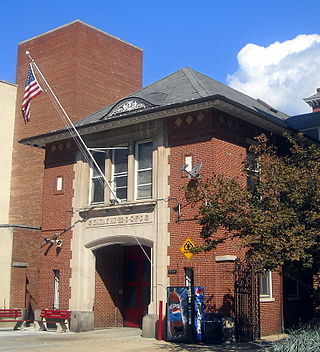
Petworth is a residential neighborhood in the Northwest quadrant of Washington, D.C. It is bounded to the east by the Armed Forces Retirement Home and Rock Creek Cemetery, to the west by Arkansas Avenue NW, to the south by Rock Creek Church Road NW and Spring Road NW, and to the north by Kennedy Street NW.

Streetcars in Washington, D.C. transported people across the city and region from 1862 until 1962.

This is a list of properties and districts in Washington, D.C., on the National Register of Historic Places. There are more than 600 listings, including 74 National Historic Landmarks of the United States and another 13 places otherwise designated as historic sites of national importance by Congress or the President.

Brightwood is a neighborhood in the northwestern quadrant of Washington, D.C. Brightwood is part of Ward 4.

Georgia Avenue is a major north-south artery in Northwest Washington, D.C., and Montgomery County, Maryland. Within the District of Columbia and a short distance in Silver Spring, Maryland, Georgia Avenue is also U.S. Route 29. Both Howard University and Walter Reed Army Medical Center are located on Georgia Avenue.

Brightwood Park is a small neighborhood in Northwest Washington, D.C. in the United States. The neighborhood is bounded by Georgia Avenue NW to the west, Missouri Avenue NW to the northeast and Kennedy Street NW to the south. More recently, areas that are technically part of the northern extremity of the Petworth neighborhood have been increasingly referred to as Brightwood Park. Often these informal boundaries extend south to Emerson Street NW, and east to New Hampshire Avenue NW. Another definition places Hamilton Street NW as Brightwood Park's southern boundary. Yet another definition places Brightwood Park's southern boundary as Ingraham Street NW. It is located in Ward 4.

The boundary markers of the original District of Columbia are the 40 milestones that marked the four lines forming the boundaries between the states of Maryland and Virginia and the square of 100 square miles (259 km2) of federal territory that became the District of Columbia in 1801. Working under the supervision of three commissioners that President George Washington had appointed in 1790 in accordance with the federal Residence Act, a surveying team that Major Andrew Ellicott led placed these markers in 1791 and 1792. Among Ellicott's assistants were his brothers Joseph and Benjamin Ellicott, Isaac Roberdeau, George Fenwick, Isaac Briggs and an African American astronomer, Benjamin Banneker.

The Metropolitan Railroad was the second streetcar company to operate in Washington, D.C., United States. It was incorporated and started operations in 1864, running from the Capitol to the War Department and along H Street NW in downtown. It added lines on 9th Street NW, on 4th Street SW/SE, along Connecticut Avenue to Dupont Circle, to Georgetown, to Mt. Pleasant and north along Georgia Avenue. In the late 19th Century it was purchased by the Washington Traction and Electric Company and on February 4, 1902, became a part of the Washington Railway and Electric Company.

James G. Hill (1841–1913) was an American architect who, during the period 1876 to 1883, headed the Office of the Supervising Architect of the United States Department of the Treasury, which oversaw major Federal buildings.

Snowden Ashford (1866–1927) was an American architect who worked in Washington, D.C., his native city. Born on January 1, 1866, Ashford was educated at Rittenhouse Academy and at the Christian Brothers Roman Catholic school. He studied architecture at Lafayette College and, upon graduation, entered the office of Alfred B. Mullett, who had formerly been supervising architect of the United States Treasury. Ashford entered the District service in 1895 and became Washington's first municipal architect. The Washington Post characterized him as "Architect of the Everyday", and noted: "Ashford designed or supervised everything the District built between 1895 and 1921, including the North Hall at the Eastern Market. But he was most proud of his schools."

The Vigilant Firehouse is a historic building in the Georgetown section of Washington, D.C. located at 1066 Wisconsin Ave., NW, just north of the Chesapeake and Ohio Canal and the Canal Monument. The Vigilant Fire Company was organized in 1817 and this firehouse was built in 1844, making it the oldest extant firehouse in the District of Columbia. It was listed on the National Register of Historic Places in 1971.

Engine House No. 10 is a historic firehouse located at 1341 Maryland Ave., NE., Washington, D.C., in the Stanton Park neighborhood, just north of Capitol Hill.

Engine Company No. 19 is a historic Engine house in Southeast Washington, D.C.'s Randle Highlands neighborhood. It was listed on the District of Columbia Inventory of Historic Sites in 2009 and it was listed on the National Register of Historic Places in 2010.

Engine Company 21, also known as the Lanier Heights Firehouse, is a fire station or firehouse and a historic structure located in the Lanier Heights neighborhood in Washington, D.C. It was listed on the District of Columbia Inventory of Historic Sites in 2005 and on the National Register of Historic Places in 2007. The building is attributed to local architect Appleton P. Clark, Jr., and built in 1908 in the Spanish Colonial Revival style. The station was built to serve the growing suburban areas of Washington north of Florida Avenue, NW. Because of its proximity to numerous multistory apartment buildings it housed the longest hook-and-ladder truck in the city.

Engine Company 23 is a fire station and a historic structure located in the Foggy Bottom neighborhood of Washington, D.C. The two-story Italianate style building was a collaboration of the Washington, D.C. architectural firm of Hornblower & Marshall and District of Columbia Municipal Architect Snowden Ashford. It was built in 1910. The exterior of the structure features segmental-arched vehicle openings and quoined limestone frontispiece. It was listed on both the District of Columbia Inventory of Historic Sites in 2005 and on the National Register of Historic Places in 2007. The building sits on the campus of the George Washington University near Kogan Plaza.

Leon Emil Dessez was an American architect in Washington D.C. He designed public buildings in Washington D.C., and residences in Washington D.C., Maryland, and Virginia, including some of the first in Chevy Chase, Maryland, where he was the community's first resident. His work includes the 1893 the conversion of 1111 Pennsylvania Avenue, The Shepherd Centennial Building, into the Raleigh Hotel and the Normal School for Colored Girls (1913), designed with Snowden Ashford.

Appleton Prentiss Clark Jr. was an American architect from Washington, D.C. During his 60-year career, Clark was responsible for designing hundreds of buildings in the Washington area, including homes, hotels, churches, apartments and commercial properties. He is considered one of the city's most prominent and influential architects from the late 19th and early 20th centuries. Many of his designs are now listed on the National Register of Historic Places (NRHP).

Truck Company F, at 1336-1338 Park Rd. NW in Washington, D.C., was built in 1900. It was listed on the National Register of Historic Places in 2007. The listing included two contributing buildings.

Engine Company 29, at 4811 MacArthur Blvd. NW in Washington, D.C., is a fire station built in 1925. It was listed on the National Register of Historic Places in 2007.

Albert L. Harris was an American architect who worked primarily in Washington, D.C. He was born in Wales and emigrated to the United States as a young child. He worked for architectural firms in Chicago and Baltimore and then Washington, where he also obtained an architectural degree from George Washington University. He was a part-time professor there while also working for the US Navy and then the city of Washington where he served as the city's Municipal Architect from 1921 until his death in 1933. A number of his works are listed on the National Register of Historic Places (NRHP).





















